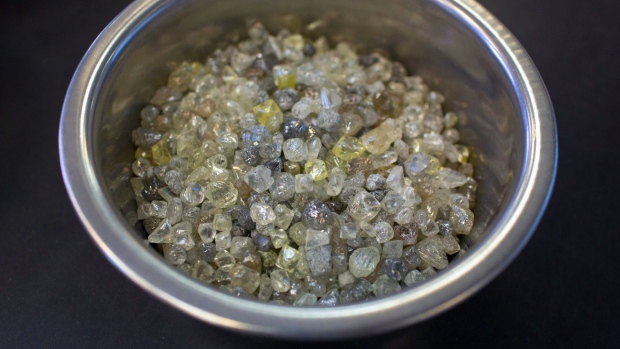Sep 15, 2023
G-7 Plans Russian Diamond Imports Ban by Year-End, Belgium Says
, Bloomberg News

(Bloomberg) -- A ban on imports of Russian diamonds is expected to be agreed by Group of Seven nations in the next two or three weeks, a Belgian official said Friday.
The mechanism will consist of a direct ban on purchases, which would take effect on Jan. 1, as well as indirect ban, which would kick in more gradually, the official added.
Earlier attempts to sanction Russian gems in Europe had met resistance from leading importer nations like Belgium, which had argued that a simple ban would just shift the lucrative gem trade elsewhere. The indirect element of the ban is aimed at trying to restrict that dynamic by tracking the Russian gems across border. Belgium isn’t a G-7 member, but previously said it would support a ban if the G-7 can find an effective mechanism.
The G-7 and its European allies are trying to find additional ways to squeeze Russia’s economy to constrain its ability to fund its war in Ukraine.
A diamond’s origin is clear at the start of the supply chain when it is issued a certificate under the Kimberley Process, which was designed to end the sale of so-called blood diamonds that financed wars. After that, they can become difficult to track.
The G-7 still needs to sort out technical details of the diamond ban, and then the European Union can develop its sanctions regulation in the fall, the official said. The plan is to ban purchases of rough or polished diamonds, whether directly from Russian giant Alrosa PJSC or from re-sellers in India or the United Arab Emirates.
Alrosa, which produces about 30% of global diamonds, declined to comment.
Read more: G-7 to Chase Russia’s Diamonds While Stopping Short of Total Ban
Russia vies with Botswana as the world’s biggest source of diamonds. Since the start of the war, many Western jewelry retailers shunned the country’s stones, particularly after the US sanctioned Alrosa.
That didn’t stem the flow of diamonds from the country, although the volume of imported Russian diamonds to the EU dropped by about 95% from pre-war levels, the Belgian official said. A handful of Indian and Belgian buyers continued to snap up large volumes at lucrative terms, picking the diamonds they needed while others stayed away. Diamonds also relocated to hubs in the UAE, Belarus and Armenia.
And while the US imposed sanctions on diamonds coming directly from Russia, rough, cut and polished stones coming from India or Belgium have until now remained legal.
The nature of the industry has also made it hard to track diamonds.
Parcels of gems are often intermingled at trading houses, and the original certificate will be replaced with “mixed-origin” documentation, making it nearly impossible to keep track of where Russian diamonds are eventually sold.
The new system will combine physical checks with opening packages, and checking the weight and value with compulsory traceability data for those who make and trade diamonds, the Belgian official said. As an example, an Indian polisher would have to segregate production of Russian and non-Russian diamonds in the polishing process. Mixed-origin diamonds won’t be allowed to the G-7 market under the plan.
Governments will have access to the traceability data through a public ledger that is being developed and would be similar to the SWIFT international payments system between banks.
--With assistance from Alberto Nardelli.
(Updates with context, details of plan starting in eighth paragraph)
©2023 Bloomberg L.P.








